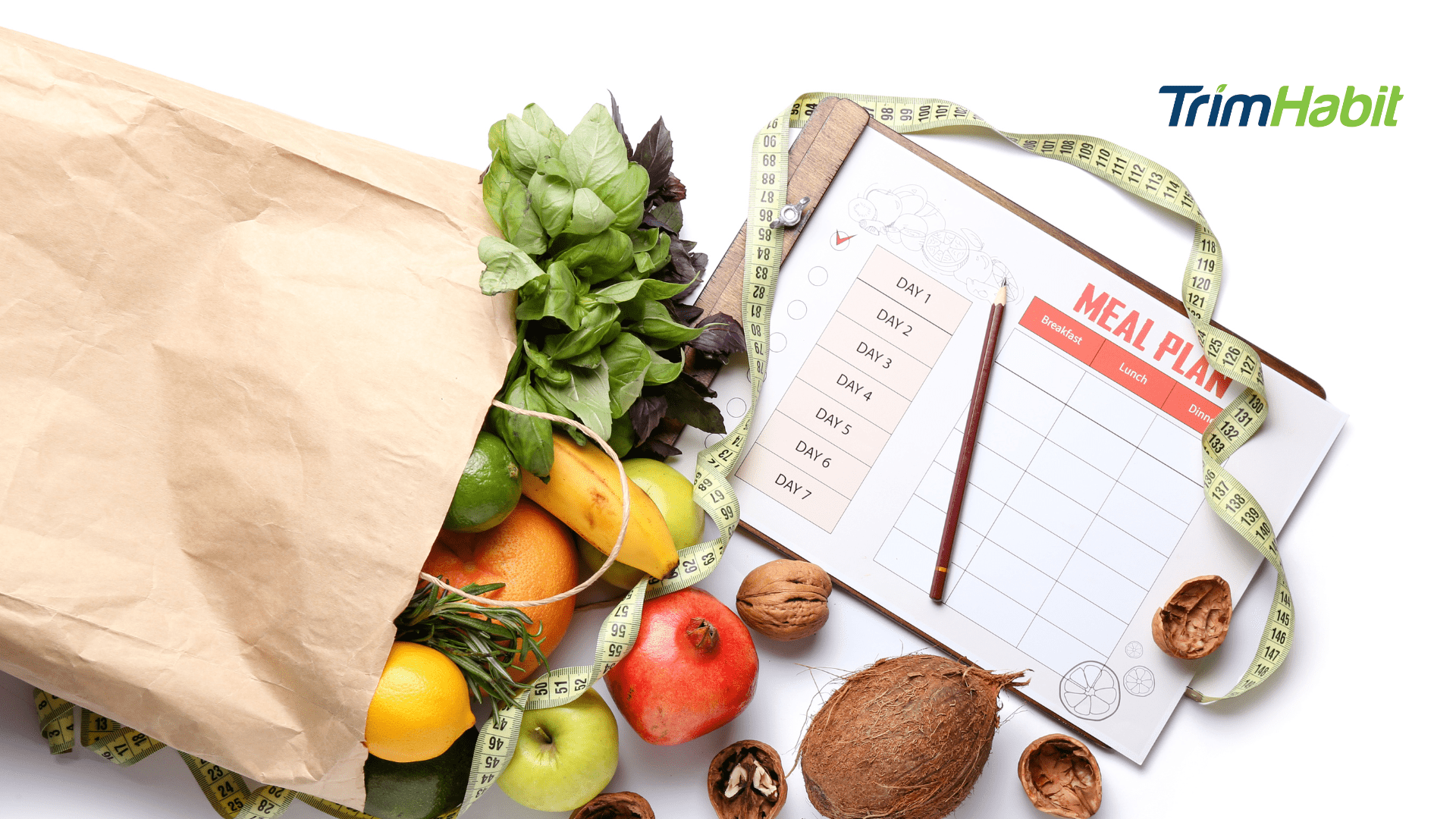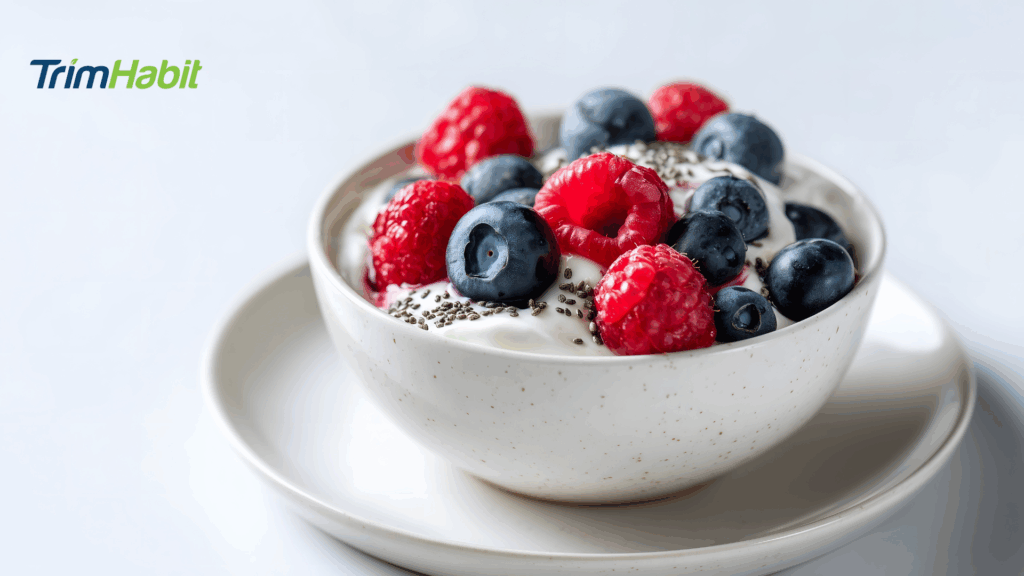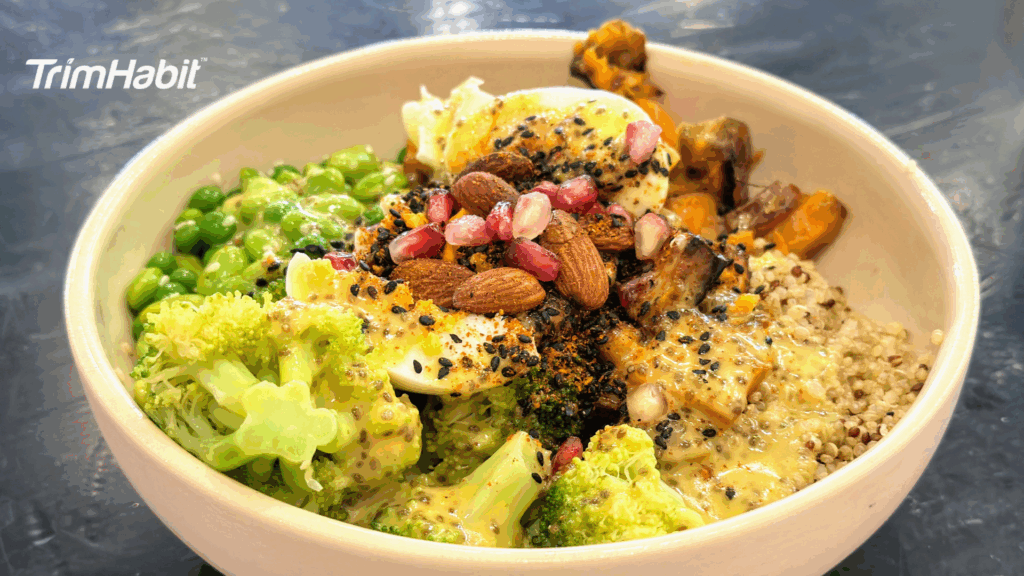When you’re taking semaglutide to support weight loss, what you eat and when you eat it can shape your results. You might notice your appetite changing or meals feeling less appealing at certain times. That’s normal. But having a steady routine can make eating feel more manageable and help you avoid habits that slow you down.
Below is a simple daily eating schedule for semaglutide weight loss, focusing on steady meals, smart food choices, and clear timing. The goal is to keep you feeling steady and supported, without overthinking every bite.
Why Meal Timing Matters More Than You Think
Semaglutide changes the way your body responds to food. It slows digestion, helps you feel full longer, and can reduce how much you feel like eating throughout the day1. Without a plan, these changes might lead to missed meals, late-night snacking, or relying on quick foods that do not support your progress.
You might feel tempted to eat less or skip meals, thinking it helps you lose weight faster. But skipping food often backfires. Your body needs fuel to function, especially when it’s adjusting to a lower calorie intake. Eating on a schedule helps you stay consistent and keeps your blood sugar levels stable2. It supports appetite control, protects your energy, and allows your body to burn fat while holding on to muscle mass.
When you spread your meals across the day, you’re also giving yourself more chances to get the essential vitamins and minerals you need. That matters more than ever while you’re using a weight loss drug. A reliable rhythm also helps you stay connected to your hunger and fullness cues, which can feel different on semaglutide. Instead of wondering whether to eat or wait, your schedule does the heavy lifting.
The Role Of Routine
A predictable meal schedule supports weight loss, stable blood sugar, and better control of hunger. Eating at consistent times each day helps you recognize true hunger and avoid skipped meals or impulsive snacking. While semaglutide helps lower appetite, routine eating strengthens your ability to stay on track with a healthy diet.
When you follow a consistent pattern, you’re more likely to plan ahead and choose healthy foods that provide lasting energy and key nutrients. You don’t need to eat often, but organizing your day around three meals and, if needed, one light snack can help your body function well without overeating. Structure makes it easier to stick with your plan and avoid eating based on mood or convenience.
Starting Your Day With A Steady Base
Mornings can feel strange when you’re on semaglutide. You might wake up without an appetite, or your stomach might feel slightly unsettled. Even if you’re not hungry, it’s still important to eat something small to start the day. This helps regulate blood sugar levels and prevents hunger from creeping in later when you’re less prepared.
It’s not about forcing a full breakfast. Think of it as giving your body a gentle push in the right direction. Starting the day with a little fuel helps wake up your system and keeps blood sugar spikes in check.
Choose foods that are light but steady. High fiber carbohydrates, lean proteins, and a small amount of healthy fats are enough to give your body what it needs without overwhelming your stomach.
A slice of whole-grain toast with plain yogurt or a boiled egg can be a gentle way to start the day. You might also enjoy a small bowl of Greek yogurt with cherry tomatoes or a spoonful of olive oil blended into a warm bowl of oats. If you prefer a savory option, try a few vegetable sticks with fresh herbs and a slice of whole-wheat bread.
The goal is not to eat a full plate if you are not ready. The goal is to give your body some structure and prepare it for better balance throughout the day.
Midday: Keep The Momentum Going
By the time lunch arrives, your body needs more than just a snack. Even if your appetite is still lower than usual, skipping lunch can set you up for fatigue or cravings later.
This is a good time to focus on nutrient-dense foods that supply your body with energy, fiber, and essential nutrients. Think lean proteins, high-fiber carbohydrates, non-starchy vegetables, and healthy fats. These help maintain blood sugar levels and protect muscle mass as your calorie intake shifts.
Lunch can be simple. Try grilled lean meats, a scoop of brown rice, and a side of green beans or mixed greens. Add a drizzle of olive oil for flavor and satisfaction. A whole grain tortilla filled with cooked kidney beans, leafy greens, and a few chopped cherry tomatoes is another easy option.
Try to avoid processed foods and refined grains around this time of day. They might be convenient, but they rarely offer the long-term energy or health benefits that your body needs during your weight loss journey.
Also, this is a good time to pay attention to your hydration. Drinking water consistently throughout the day helps with digestion, keeps you full between meals, and reduces the chance of confusing thirst for hunger. Avoid sugary beverages, which can trigger blood sugar spikes and leave you feeling tired.
Afternoon: Avoid The Crash
Afternoon cravings are common, especially if your earlier meals were light. This is when it helps to plan ahead. If you wait too long to eat or turn to sugary drinks, blood sugar spikes can make you feel hungrier than you actually are.
Stick with snacks that are easy to digest but rich enough to hold you over. A small portion of high-protein foods can do the job. Greek yogurt, plain cottage cheese, or a boiled egg paired with fresh vegetables or leafy greens can make a big impact without giving you too many calories.
If you prefer a plant-based snack, kidney beans or a few slices of bell pepper with hummus will support your health without pulling your progress off track.
Use this part of the day to stay grounded. You do not need to be full, just comfortable. That way, when dinner comes around, you are not so hungry that you reach for fried and greasy foods out of convenience.
Dinner: Keep It Light, Not Empty
Your last meal of the day should feel satisfying, not heavy. Overeating at night can disrupt your sleep and leave you feeling uncomfortable. It can also interfere with your weight management efforts, especially when your digestion is already slower.
Build your dinner around lean proteins, non-starchy vegetables, and high-fiber carbohydrates. Sweet potatoes, green beans, and grilled chicken are good combinations. If you like variety, pair brown rice with stir-fried mixed greens, bell pepper, and tofu or lean meats. Add flavor with olive oil or fresh herbs instead of heavy sauces.
Skip fried foods and fatty foods, which can feel too rich and make digestion harder. Sugary beverages, sweet tea, and carbonated beverages are also worth avoiding in the evening, since they do not offer much except extra calories and high blood sugar levels.
If you eat dinner early and tend to feel hungry again later, build in a light, protein-based snack. This can help you avoid late-night eating habits that don’t support your health goals.
Evening Hunger: What To Do About It
If you feel hungry again after dinner, pause before heading back to the kitchen. Check in with yourself. Are you physically hungry, or are you tired, bored, or restless?
If you are truly hungry, choose something light but nourishing. A slice of whole wheat bread with a boiled egg, a few vegetable sticks, or a small bowl of plain yogurt can hold you over. Keeping things light at night supports better digestion and blood sugar control.
You do not need to fight hunger. You just need to stay aware of how your body feels and respond with something that supports your health goals.
What To Limit Or Avoid
Some foods work against your weight loss efforts. Foods high in saturated fats, refined carbohydrates, and added sugars can make it harder to stay full and make your appetite harder to manage.
Try to avoid sugar-sweetened beverages, fried foods, processed foods, and fatty foods that do not offer real nutrition. These can raise blood sugar levels and leave you feeling sluggish.
It also helps to limit refined grains like white bread and pasta, which are often less filling than whole grains. Swapping in whole wheat bread, brown rice, or whole grain toast is a small change that can bring health benefits over time.
Putting It All Together: Daily Eating Schedule For Semaglutide Weight Loss
Here is one example of how a full day might look. This is just a sample meal plan to help you see how everything fits together:
Early Morning (6:30–7:00 AM): Hydration First
Begin with a glass of water. If you take semaglutide in the morning, do so on an empty stomach, then wait at least 30 minutes before eating. This sets the tone for your day and helps avoid confusion between thirst and hunger.
Breakfast Options (7:30–8:30 AM)
Your first meal should be light but balanced. Keep portions small and build around protein and fiber.
- Plain Greek yogurt with sliced cucumber and a drizzle of olive oil.
- One boiled egg, half an avocado, and a small slice of whole grain toast.
- Oatmeal made with water or milk, topped with chia seeds and a few berries.
Lunch Options (12:00–1:00 PM)
Lunch is your opportunity to eat a complete, satisfying meal built around lean protein, fiber, and healthy fats.
- Grilled chicken breast with roasted zucchini, red peppers, and quinoa.
- Lentil and spinach stew with a spoonful of brown rice and a cucumber side salad.
- Baked salmon, steamed broccoli, and a roasted sweet potato wedge.
Snack (3:30–4:00 PM, If Needed)
You may not always need a snack. But if your previous meal was light or dinner is still far away, try one of these:
- A boiled egg and a few cherry tomatoes.
- Cottage cheese with sliced green bell pepper.
- A tablespoon of hummus with raw carrot sticks.
Dinner Options (6:30–7:00 PM)
Evening meals should be nourishing but not too heavy, especially since semaglutide can slow digestion.
- Baked tofu with sautéed green beans and a few roasted potato cubes.
- Grilled cod with cooked spinach and a side of mashed cauliflower.
- Stir-fried turkey and cabbage with a small serving of brown rice.
Evening (8:30–9:00 PM): Wind Down Without Extra Calories
If hunger returns, drink water or herbal tea first. If you still need something, keep it minimal:
- A spoonful of plain yogurt.
- Half a boiled egg.
- A few slices of cucumber or celery.
Final Thoughts
A daily eating schedule for semaglutide weight loss should feel steady, flexible, and realistic. You are not chasing perfection. You are learning what works for your body while using a tool that supports your weight loss. Focus on meals that give you essential nutrients, stable energy, and space to breathe.
Some days will feel easier than others. What matters is the pattern you build over time. Use the rhythm of your day to create balance, stick to your diet plan, and prioritize nutrient-dense foods that help you feel strong and supported.
Every choice you make can bring you closer to better health, more comfort, and the kind of weight loss that lasts.









